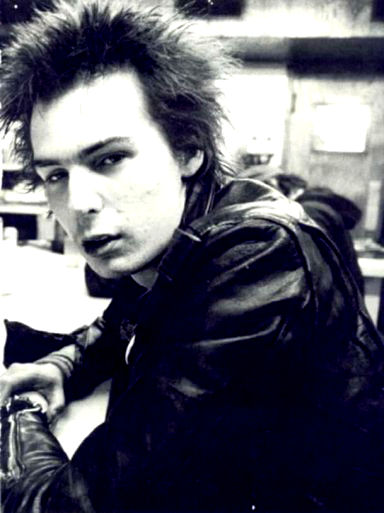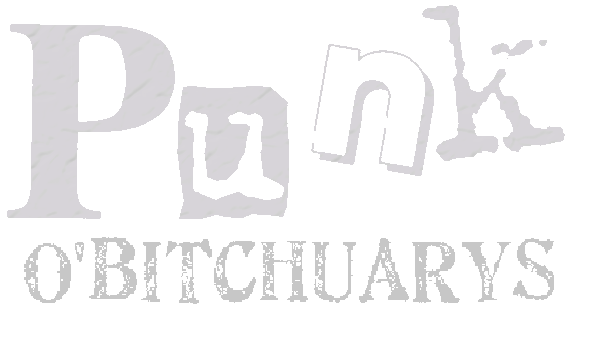| SID VICIOUS May 10, 1957 - February 2, 1979 JOHN SIMON Ritchie, better known as Sid -Vicious, died in New York last week after taking an overdose of heroin at a party held to celebrate his release from jail on $50,000 bail pending his trial on a charge of murdering his girlfriend, Nancy Spungen, some four months ago. The party was held at the flat of Sid's current girlfriend Michelle Robinson, and among those present was his mother, Mrs Ann Beverley, who had been campaigning for his release since the Spungen death. Following his arrest for murder, Sid was initially released - on $50,000 bail and conditions which included treatment for his heroin addiction - but he was arrested again after an assault on Patti Smith's brother Todd in a New York disco. This time he served 55 days. While in prison Sid was put on a detoxification course to 'clean out' his addicted system. Without the 'tolerance' built up by regular usage of heroin, even Sid's normal dose was potentially fatal. The precise circumstances of the lethal dose are not known. What is evident is that around midnight Sid was given heroin at the party and that shortly afterwards he collapsed and went into a seizure, his skin and lips taking on the blue/grey tinge associated with heroin overdose. He was covered with blankets and his pulse checked until some 40 minutes later he revived. Guests spoke of seeing him walking around at this point. Around 3 am the party finished and Sid and Michelle retired to bed. Mrs Beverley stayed the night on the couch in the front room. The following morning she went into the bedroom to wake the couple and discovered her son dead, naked and lying outside the covers while his girlfriend slept on the bed beside him, unaware of his death. The police were called. Patrolman Robert Zink, the first to arrive, discovered "a syringe, a spoon, and what is probably residue near the body." Later Dr Michael Baden, who performed the autopsy, said that Sid "died much like a drowning person. There was an accumulation of fluid in the lungs characteristic of heroin." There remains some dispute, however, on the origin of the dose that actually killed him. Mrs Beverley, once a registered addict herself, admitted in an interview with The Daily Express that on the night of Sid's death she had been holding his heroin supply, but claimed that after the seizure Sid "didn't have any more that night because I had the packet in my pocket." She did agree, however, that the heroin he had taken had been unusually pure: "He knew the smack was pure and strong and took a lot less than usual." The view held by some people is that Sid had another source of heroin and may have taken an additional dose after his mother and Michelle Robinson were asleep. If this was indeed the case, then the overdose may have been tantamount to suicide. THE PRODUCT of a broken home, London's East End and Clissold Park School, Sid started his rock'n'roll career with The Sex Pistols. As a former crony of Johnny Rotten - the two were at a further education college together - he was one of the small faithful coterie of friends/fans who followed the Pistols' early gigs from late '75 onwards. It was during this time that he acquired the name Sid Vicious, apparently inherited from Rotten's pet hamster. Later he was to declare that he hated the name but at the same time did little to shake it off. He was fond of carrying a bike chain as a weapon and was sometimes in evidence at the occasional eruptions of violence at early punk gigs. Sid was not a 'hard man' - not constantly or determinedly aggressive - but there was a violent streak in him. Sometimes this was turned against other people and at times against himself in fits of self-mutilation. Friends and associates spoke of a Jekyl/Hyde disposition. "He seemed to have a lot of demons in his head," said one. "He was tormented." Whatever, the name stuck. Sid's first public performance was at the Punk Festival at London's 100 Club in September '76, when he played drums for the hurriedly arranged debut gig of Siouxsie And The Banshees. Later he took up bass and hoped to play with The Banshees but this came to nothing. Following Glen Matlock's departure in spring '77 he joined the Pistols as bassman in time to sign with A&M Records and face the sound and fury that accompanied the eventual release of "God Save The Queen" in the Jubilee summer. His playing was strictly rudimentary but he seemed to learn and practice. All the Pistols agree that for a time his playing got better. A major change in Sid's life took place when he met Nancy Spungen, a 20-year-old New York groupie who had followed Jerry Nolan of The Heartbreakers to this country and seemed determined to 'pull' one of the Pistols. She got Sid. All agree that Spungen was a bad, if not disastrous, influence on him. His weak character was easy prey for her aggressive, vampish ways. She instigated dissent between him and the other Pistols, and, more importantly, introduced him to heroin. Nonetheless the couple had an obvious liking for each other and when Nancy was threatened with deportation, Sid falsely testified that they were married to gain her a visa extension. Once Sid became involved with heroin his self-destructiveness and self-mutilation gained momentum, and by the time of the Pistols' tour of America at the beginning of '78, he was taking the stage with his torso covered in self-inflicted lacerations - He also indulged in some ugly scuffles with the Pistols' American audiences, kicking and using his bass as a cudgel. He was also taking increasingly large amounts of the drug, alienating himself from the rest of the band and contributing to their decision to split. Following the Pistols final gig in San Francisco he had to be rushed from New York airport to hospital for emergency treatment following an overdose. BACK IN London things did not improve. He and Nancy were remanded for possession of amphetamines but the case was never heard. Attempts to start his own band with the remainder of The Heartbreakers - either as The Flowers Of Romance or, more brutally, The Junkies - were a failure. The couple then moved to New York where Sid hoped he would find a new career (he felt his ex-Pistols status gave him more credibility there), but he never got further than the methadone clinic and a few abortive gigs at CBGBs with old friends helping out. Shortly after the CBGBs gigs came Nancy Spungen's death, the grisly secrets of which will probably follow Sid into the grave. Whether Vicious killed her or not, once she had gone it seemed only a matter of time before Sid followed. Even before the Pistols U.S. tour he had talked to NME's Nick Kent about premonitions of his death. Talk of an explicit 'suicide pact' at the time of Nancy's death may have been exaggerated but there is little doubt that, via their mutual fascination for hard drugs, knives and violence, the two were on a 'death trip' together. There could be only one outcome. Ten days after the slaying, Sid slashed his arms and wrist in an apparent suicide attempt, and was treated in hospital. Then came the disco attack and he was back in custody. INEVITABLY THERE will be repercussions from Sid's death, and already there is talk of who was 'responsible' for it. Malcolm McLaren, Sid's manager has - with some justification - laid the blame directly on whoever gave Sid the heroin at the party. Others will doubtless attribute the responsibility to McLaren himself as the progenitor of the punk role Sid acted out. Others still will blame the whole ethic of punk rock and seek to draw moral conclusions about the music as a whole from Sid's tragedy. Again, some will point a finger at the media that played up and glorified the Pistols and Sid - which must include the music press and NME- claiming that his death is the inevitable outcome of elevating a nobody to undeserved heights. Some might also point to the late Nancy Spungen as the person who gave Sid his fatal fascination for heroin in the first place. Probably there is an element of truth in all of these accusations, but the simple fact remains that it was heroin that killed Sid Vicious; a drug and not a person, a drug that he took of his own free will. That is, in as much as junkies can be said to have a free will. Certainly on the night of his death Sid Vicious was not under any compulsion from physical addiction to take more of the drug; his detoxification is the guarantee of that. Finally, his death is mostly a warning about the futility and ultimate fatality of heroin addiction, and the responsibility for that cannot be laid at the door of punk rock, just as the death of Charlie Parker cannot be blamed on jazz or the death of Janis Joplin on '60s rock. In fact, there are far, far fewer hard drug users in punk rock circles - at least in this country - than among the echelons of rock's so called 'old guard'. Ultimately Sid's death has far more to do with organised international crime and its traffic in heroin than rock and roll. What rock must not do is to propagate heroin addiction - something which, alongside acclaimed radical literati like William Burroughs, it has sometimes been guilty of in the past. The equation that Heronn = Death has been enacted enough times for it to be obvious to all. By NEIL SPENCER (New Musical Express February 10th 1979) |
| Sid Vicious - Sex Pistols |



